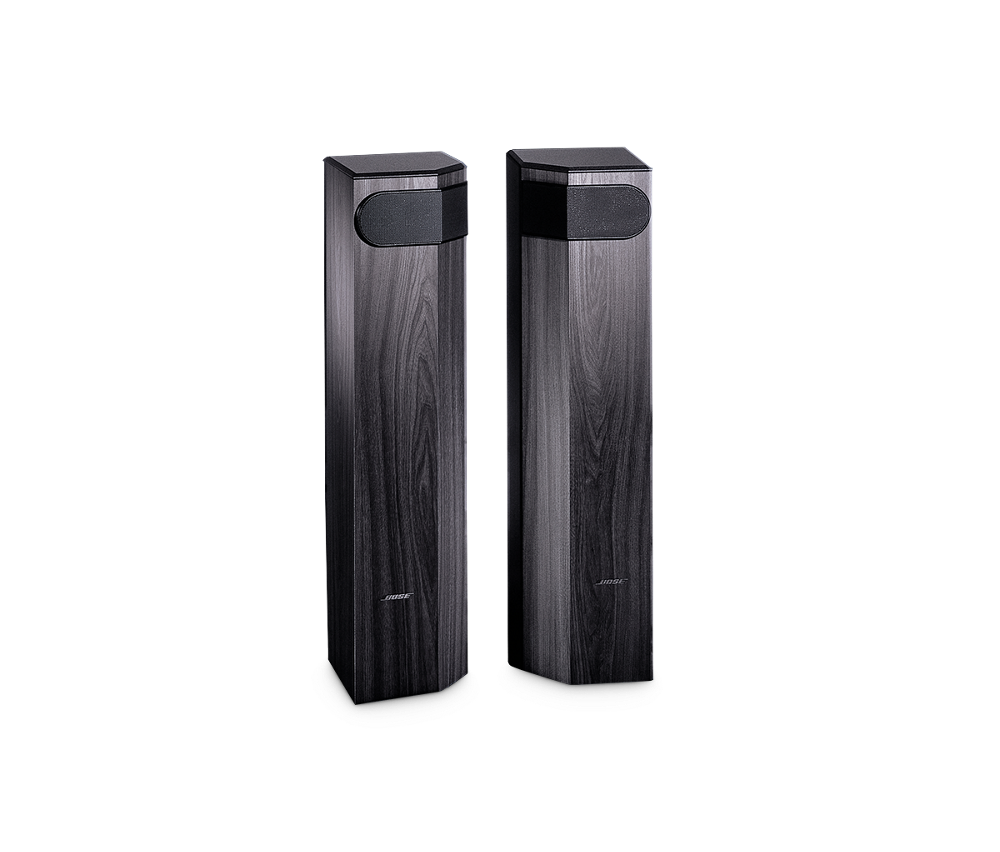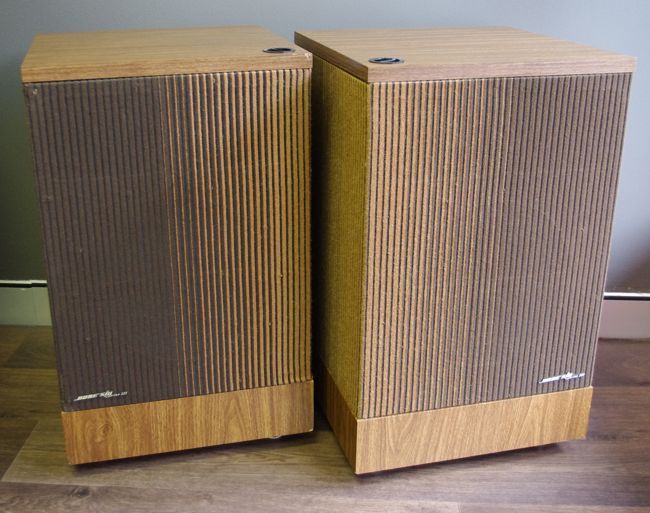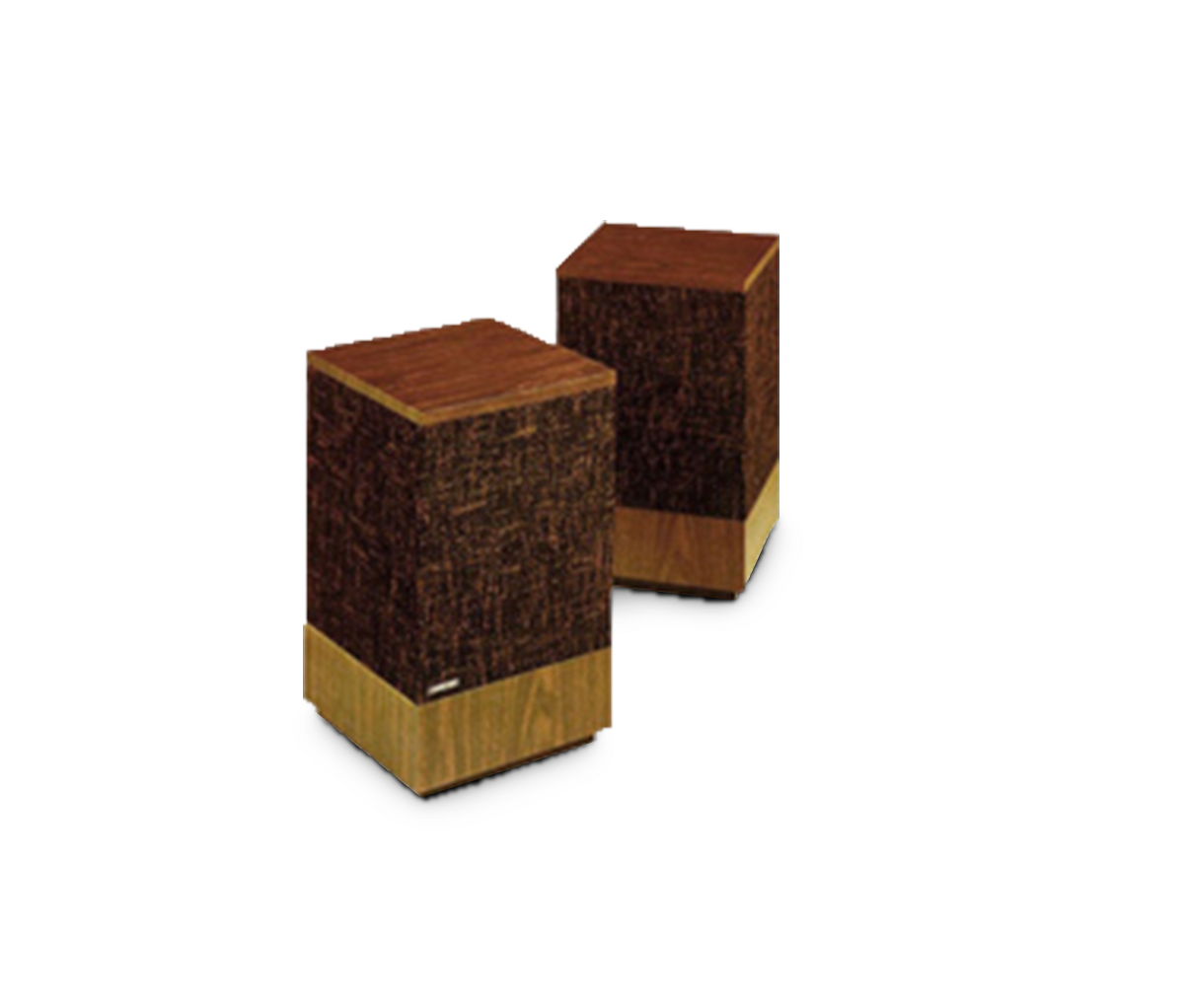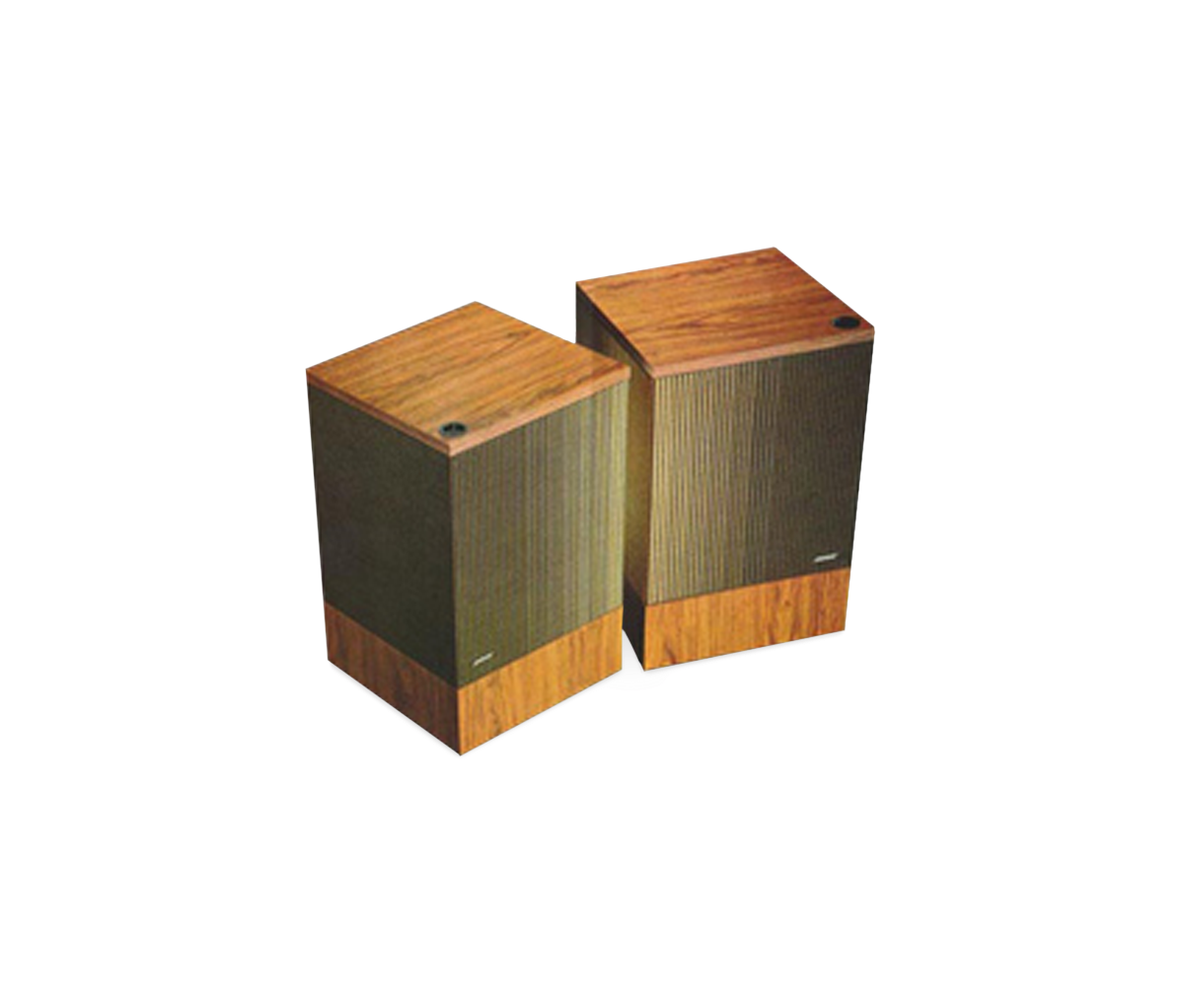A New Review of an Old Thing
So this is the first, in what I hope to be a pretty long line of reviews of old things. I like old things. I like the feel, the design, the art, the spirit and the class that old things seem to possess. I also like the positive effects of using the things in the world that already exist.
The Bose 501 series - a History in Reverse
The Bose 501 Direct/Reflecting speaker was made by Bose in five different variants (or Series in Bose nomenclature) from 1971 until 2001. The Series V was the last of the 501s and was produced from 1994 until 2001. Visually, they left the monkey coffin design behind and came in a tall slim floor-standing design that is far more consistent with modern designs.

Despite the improvement in looks, the Series V was the beginning of everything I have come to detest about Bose as a speaker company. Bose had decided that after the success of their Wave Radio (a fantastic design that used a folded waveguide to produce bass using very small drivers) they were no longer subject to the laws of physics. If you want to produce bass, you need to move a lot of air. Bose, on the other hand, had decided that a 5 1/4" woofer, combined with a pair of 2 1/2" twiddlers (WTF is a twiddler?) would produce a nice full range of sound. It didn't work, no one noticed, and people keep buying their crap.

The Series IV was the last of the monkey coffins and was sold from 1984 until 1994. It was the same size as the previous models with the most obvious difference being the new full height grill which now only wrapped halfway down the sides of the box. The speakers were made up of one 10" woofer and two 3" tweeters just like all previous models (give or take a 1/2"). The Series IV lost the adjustment dial for the reflecting speaker that was found on the III. Despite the similarities, the whole cabinet was a new design using a ported woofer enclosure and placing both the forward and rearward facing tweeters on the forward outside corners of the cabinets. This meant that speaker placement became far more important than before.

The Series III had a production run from 1980 to 1984. It featured speaker grills that covered the upper 4/5ths of the speaker on three full sides. It also featured the Direct Energy Control knob which allowed you to adjust the width of the soundstage to suit your desires. Gimmicky? Maybe, but it does actually work. The Series III also had a ported woofer with the port directed out the bottom of the cabinet

The Series II was produced from 1977 until 1980. It again was the same basic size with the same grill arrangement (albeit with a different cloth). The II did not have the Direct Energy Control knob but was equipped with two slightly larger 3 1/2" tweeters strangely both facing backward. I guess Bose had decided to skip the "Direct" part of this speaker setup.

The Model 501 (note the "Model" in the name) was almost identical to the 501 Series III. Visually, the easiest difference to catch was the Series III below BOSE on the grill emblem. The keen eye will also notice that the grills between the Model 501 and the Series III were reversed with the Model 501 having the badge on the outside and the gradient toward the inside of the speaker pair.
The interesting thing here is that my speakers were purchased in late 1981 as Series IIIs, but they are clearly Model 501s. So it must have been old stock, right? That was my first thought until I looked at the Owner's Manual. My Bose Model 501 owner's manual has a revision date of September 1980! The Bose website doesn't help things out here either, in fact, Bose use a Model 501 picture for the 501 series III webpage.
Who cares about history!
No, really? No one is here for the history lesson. However, before we begin I do feel I must fill you in on a few details of this review. The devil is in the details after all.
- The speakers were set up using L.O.T.S. or Loudspeaker Optimization Techniques for Soundstaging from New Record Day. The video is available on youtube, here. I do find this to be quite a good way of setting up your speakers however the 501s have a quirk which I will discuss later on.
- I typically compare speakers against the monitors in my studio and a set of Beats Studio headphones (wired of course). I do not A/B review speakers! I like to review speakers on how they sound and not on how much better or worse they sound than some one-off unobtanium uberwoffer wundertweeter. I compare them to the monitors because they are great at producing sound as it was recorded (duh!), and I compare them to the Beats headphones because they sound the way I want my music to sound all the time.
- I'm not going to tell you what amp and source I am using (but if you're smart you can figure it out). Why not? This is a speaker review, not an amplifier or a turntable or a DAC review. Just assume I plugged them into something that provides a clean signal with the right amount of power.
- My playlist. This is what I'm using to test.
Let's get on with it.
Shine Right Through - Coreatown
The 501s do a good job here for the most part. The range and depth are fairly accurate. The bass is strong and full without the muddiness that people often complain of with these speakers. Where they fall apart is the sibilance. While it's not too common in this track there are times where the "s" in "Shine right through" cuts right through me. Also, at the end of the track, the high-frequency notes become a muddled mess that seems to become progressively worse almost as if the reflections were producing some physics-defying super-constructive interference.
Lush 3-1 - Orbital
I have been using this track to tune car stereos since I first got a car. The 501s do a fairly good job on this one. The soundstage is expansive, without being "weird". The sharpness and separation of the various instruments are perfect, even in the higher ranges. It is surprising given the results of the previous track. The bass is the weak point here. Don't get me wrong, the bass is there and kicks hard but it is lacking the reverberation that I know this track is capable of. When I saw them play this live, standing in front of the bass bins made breathing difficult. Not so much here.
DARE - Gorillaz
Yup, bass. Sort of. This is one of those songs that can move your whole house a block over given the right system. While I do get quite a bit more reverb in the low end here it still suffers from the same issues. These speakers just don't go low enough. I will say that the bass notes are as clear and sharp as one could hope them to be.
This is the Day - The The
Now we are talking. I can "feel" the bass on this one. Matt Johnson's voice reverberates the whole of my listening room. The kick drums and bass guitar remain sharp. Vocally, these speakers seem to be well suited to the lower tones of the male voice. At times Matt Johnson sings quite high and the vocals quickly develop a harsh tone.
My Treasure - Sinne Eeg
The opening bass shows where these speakers shine. The notes resonate beautifully and the speakers can reproduce the finest details to the point where I can hear the player's fingers contacting the frett board. Her vocals radiate from the speakers in a heavenly serenade. There is no harshness here, even at higher registers. If there was a reason these speakers were designed I believe it was to play this song. The only complaint I have with this one is that it feels like her voice and the double bass are somehow coming from the same point in space. Oddly the rest of the instruments seem to be in their proper locations.
Personal Jesus - Depeche Mode
This one sounds exactly as it is supposed to. David's voice works well here and fills the sound stage as it should. The bass is again sharp and clear but this time you don't feel like it's missing any low end. The mids are well balanced and dance around the room as they should. On the high end, though, the song is just tickling the harshness that was found with Coreatown and The The. Could 4 tweeters be too many?
Cruel Angel - Mollies Revenge
This song should be on everyone's speaker testing list. I promise you it will put your speakers to the test. There is so much going on here that most speakers just can't cope. The Bose are no exception. You can hear the speakers failing to cope and collapsing under the effort. As the sound gets bigger things just get muddled, the brief periods of Yvette's singing without the cello, bass and guitar trio, demonstrate that the 501s can reproduce her voice beautifully but just can't handle the dynamics of this song.
It's My Life - Talk Talk
Here we have the polar opposite to the previous song. It's my life is musically a very minimal track. The 501s have little issues with this one. At times the vocals can push them into the harsh registers that are becoming all too familiar with the speakers.
Fascination Street - The Cure
This Cure classic starts out feeling really good. The warm inviting bass and drums combined with the singing guitar make you want to push the volume up. Robert Smith's voice feels good but sits perfectly at the balance point of sonic breakdown. Toward the end of the first verse, you can hear the exact moment where the speaker can no longer cope. It is a tragic event. Even hearing it coming, you cannot be prepared for the complete breakdown of the upper registers.
The Conclusion
Honestly, I couldn't recommend that anyone buy these who listens to anything other than classical music. They are capable speakers given the right music, but that just makes me wonder why? What have Bose done to make these guys distort so badly in the upper registers? Perhaps they were just crossed over poorly. I am unlikely to find out because I just don't care enough to dig any deeper.
But Wait! What about the quirk?
The other issue (I said I'd come back to it), is that speaker placement with the 501s is critical. The L.O.T.S. setup just doesn't work. On a positive note, they are the only speakers I know of that sound best when set up as per the manufacturer's instructions. These need to be pushed up against the front wall (within 0-12 inches) with a 6 to 12-foot separation and 18" of clearance on either side of the speaker. The problem here is that Bose fixed the problem that most speakers of the time (and probably today also) suffered from.
Back in the heyday of HiFi, the thought of putting a speaker 4 feet into the room to get the better sound just wasn't on anyone's mind. Speakers needed to be out of the way of the party. We now know this leads to booming bass and crappy soundstage but at the time when a spherical ice bucket made sense, no one was going to sacrifice looks for sound.
Now let's be real here. The 501s are not going to win over any audiophiles with their sound, but having said that, there is nothing at all wrong with the way they sound. Put these in a room filled with your finest mid-century modern furniture (lucky for me I have quite a bit) and slam them up against the back wall and they will fill your days with many hours of enjoyable listening.
